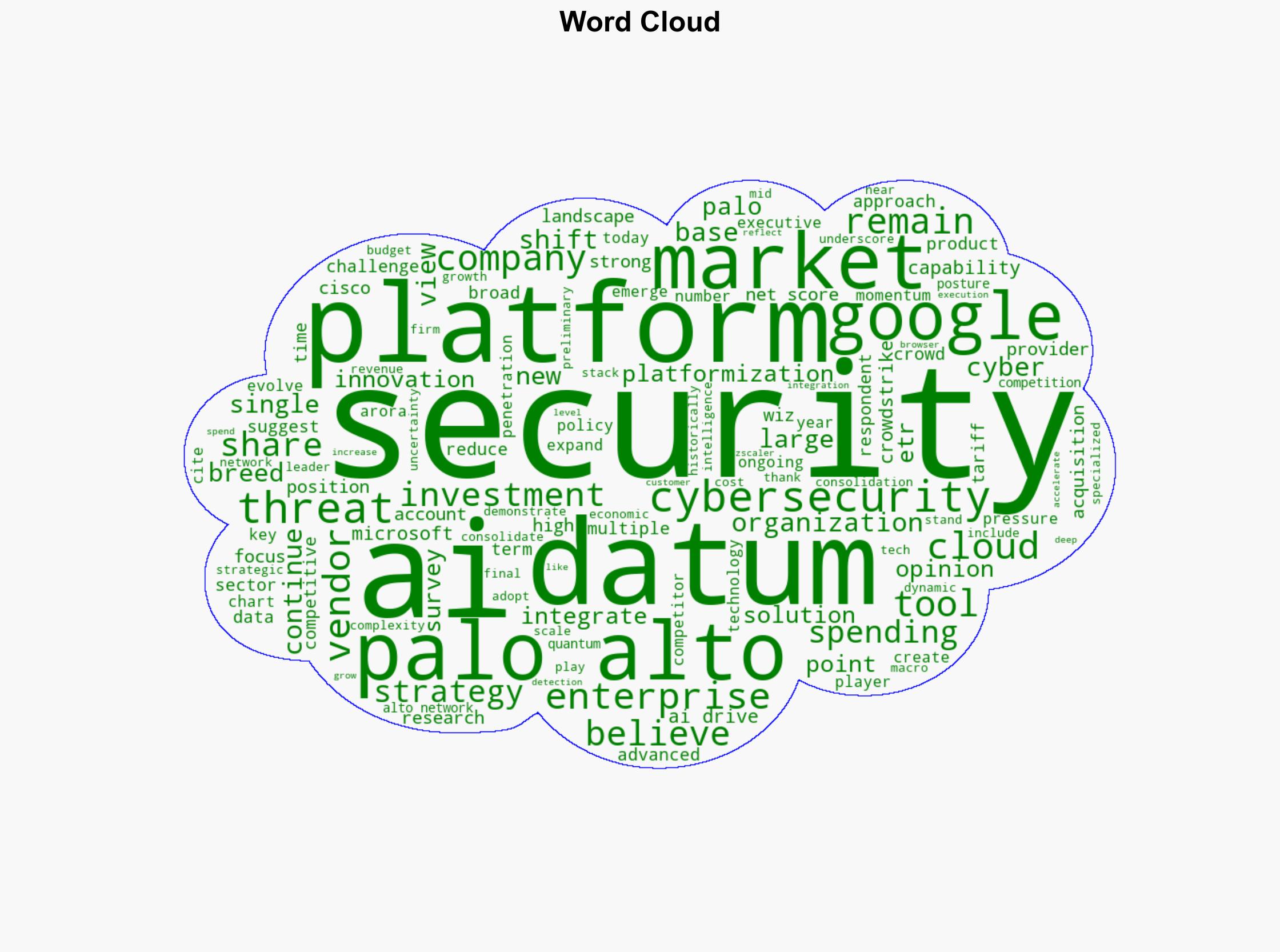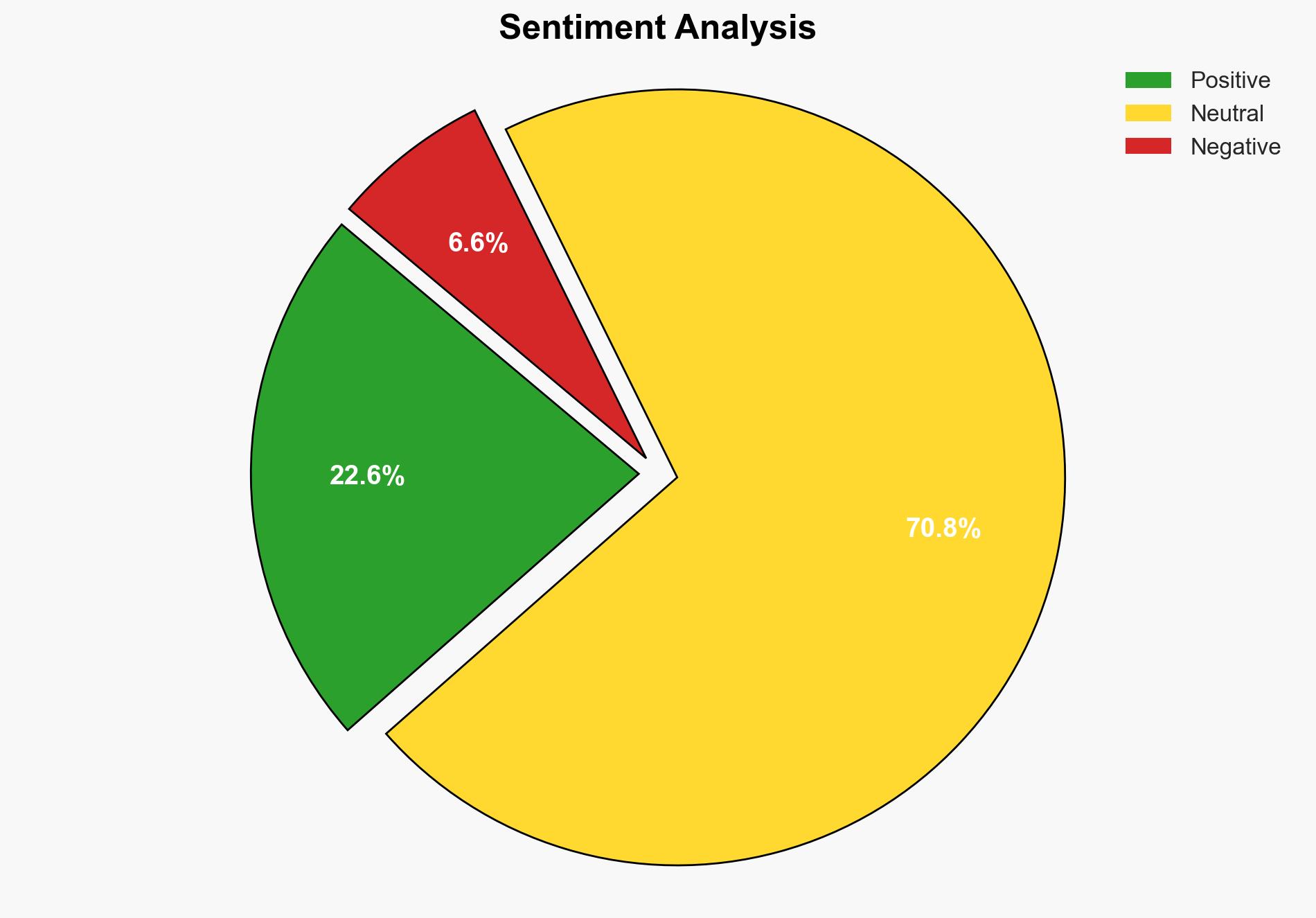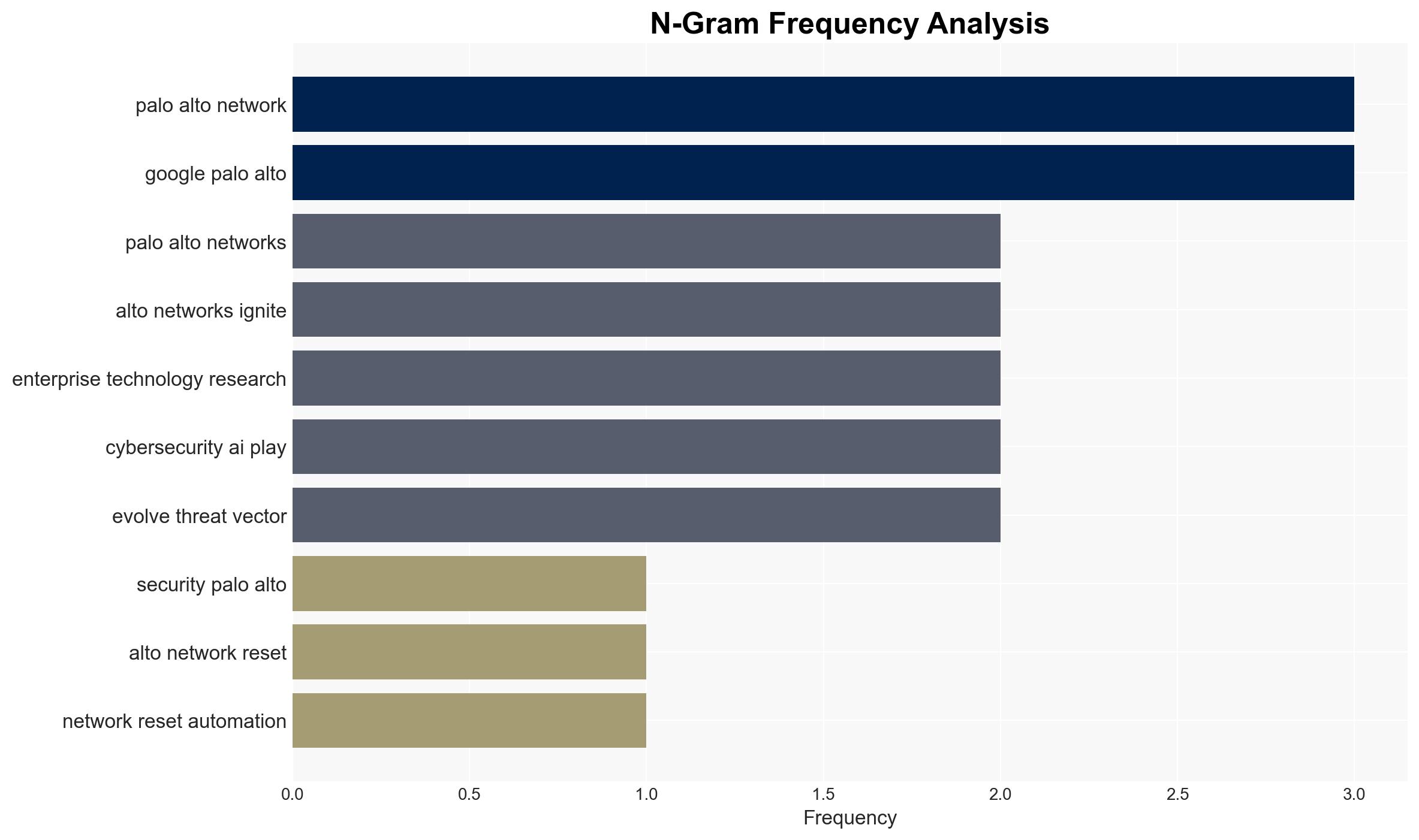Security do-over How Palo Alto Networks sees the reset – SiliconANGLE News
Published on: 2025-03-30
Intelligence Report: Security do-over How Palo Alto Networks sees the reset – SiliconANGLE News
1. BLUF (Bottom Line Up Front)
The cybersecurity landscape is undergoing a significant transformation driven by advancements in automation and artificial intelligence (AI). Current cybersecurity measures are increasingly ineffective against sophisticated AI-driven attacks. Palo Alto Networks proposes a comprehensive overhaul of cybersecurity strategies, advocating for the consolidation of tools into a single platform to enhance real-time AI operations. This approach aims to address the growing gap in exfiltration and remediation times, providing a strategic advantage against adversaries. The economic landscape, influenced by fluctuating technology spending and global trade policies, further complicates cybersecurity investments. Despite these challenges, cybersecurity remains a priority, with a focus on tools that offer quantifiable risk reduction.
2. Detailed Analysis
The following structured analytic techniques have been applied for this analysis:
General Analysis
The integration of AI into cybersecurity is both a challenge and an opportunity. AI has enabled adversaries to scale phishing attacks at unprecedented rates, overwhelming human defenses. Palo Alto Networks suggests a strategic reset, emphasizing the need for a unified platform that simplifies security operations and enhances AI capabilities. This approach is expected to improve response times and reduce vulnerabilities. Economic uncertainties, such as policy-induced volatility and supply chain disruptions, are impacting technology spending. However, the essential nature of cybersecurity in protecting critical data ensures its continued importance.
3. Implications and Strategic Risks
The rapid evolution of AI in cybersecurity presents significant risks, including increased attack sophistication and frequency. The consolidation of cybersecurity tools into a single platform may streamline operations but also introduces dependencies on specific vendors. Economic pressures, such as tariffs and supply chain issues, could hinder technology procurement and investment. These factors pose risks to national security, economic stability, and organizational resilience. The ongoing need for innovation in cybersecurity is critical to counteract these threats.
4. Recommendations and Outlook
Recommendations:
- Organizations should prioritize the integration of AI-driven tools within a consolidated cybersecurity platform to enhance real-time threat detection and response.
- Regulatory bodies should consider frameworks that support the adoption of advanced cybersecurity technologies while ensuring vendor diversification to mitigate dependency risks.
- Invest in workforce training to equip cybersecurity professionals with the skills needed to manage AI-enhanced security operations.
Outlook:
Best-case scenario: Organizations successfully integrate AI into their cybersecurity strategies, significantly reducing response times and minimizing vulnerabilities.
Worst-case scenario: Economic and policy uncertainties lead to reduced cybersecurity investments, increasing exposure to sophisticated attacks.
Most likely outcome: Continued prioritization of cybersecurity investments with selective spending on tools that demonstrate clear risk reduction benefits.
5. Key Individuals and Entities
The report mentions significant individuals and organizations, including Nikesh Arora and Zeus Kerravala, as well as Palo Alto Networks. These entities are central to the discussion on cybersecurity strategy and innovation.





